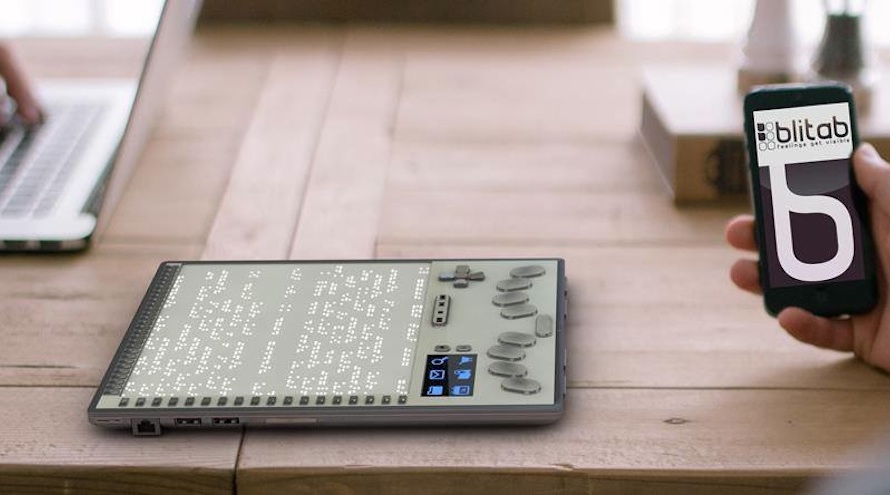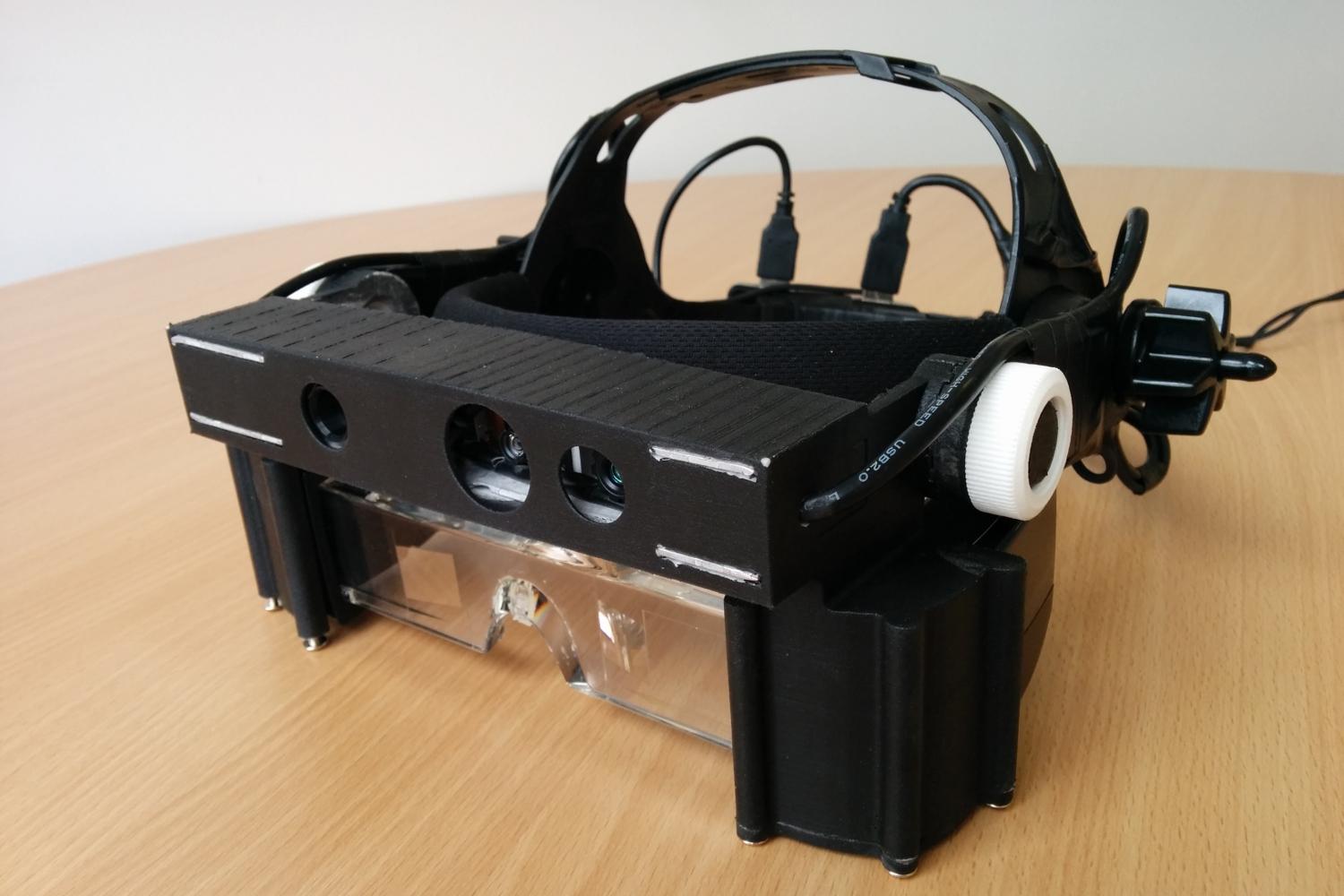Empowering Independence With Assistive Modern Technology for the Blind
The assimilation of assistive innovation right into the lives of individuals with aesthetic problems represents a substantial development in advertising independence and self-sufficiency. From ingenious display viewers to advanced clever canes, these tools not only improve day-to-day navigating and communication however likewise encourage customers to involve meaningfully in different aspects of life. As we discover the myriad benefits and real-world applications of these modern technologies, it comes to be critical to check out the underlying elements that add to their effectiveness and the capacity for future developments in this important area.
Summary of Assistive Technology

The development of assistive technology is based in principles of inclusivity and empowerment. Advancements in software application, hardware, and sensory improvements provide individuals with options tailored to their details needs. From screen readers that convert text to speech, to tactile tools that convey info via touch, these tools transform the method people engage with their environments.
In addition to useful applications, assistive modern technology fosters better social inclusion and participation in numerous markets, consisting of education and work (Mobility aids for visually impaired users). As research study and growth proceed to develop, the capacity for assistive modern technology to even more improve the lives of visually impaired people remains promising, leading the way for a more fair culture where every person can prosper
Kinds Of Assistive Devices
A selection of assistive gadgets have emerged to support individuals with visual disabilities, each made to meet particular requirements and enhance daily functioning. These devices range from low-tech solutions to modern advancements, providing diverse alternatives for users.
Low-tech gadgets consist of magnifiers and large-print products that help in reading and writing. Braille devices, such as Braille styluses and slates, make it possible for responsive reading and interaction. Alignment and mobility aids, like white walking canes, assist individuals navigate their atmosphere safely.
On the greater end of the spectrum, electronic magnifying systems and display viewers supply considerable support. Electronic magnifiers allow customers to expand text and images on screens, while screen readers convert digital content into manufactured speech, facilitating accessibility to information on computers and smart devices.
Smartphone applications likewise play an essential duty, offering functions like text recognition and navigation support. Wearable innovation, such as wise glasses outfitted with increased truth, is becoming a promising tool to enhance situational awareness.
Advantages of Assistive Modern Technology
The assimilation of assistive modern technology dramatically improves the top quality of life for people with visual problems. These innovations equip users by promoting freedom, allowing them to browse their environments more successfully and carry out daily tasks more with better ease. For circumstances, display readers and magnifying software program allow people to access electronic info, cultivating academic and expert opportunities that may have formerly run go to this website out reach.
In addition, assistive gadgets such as clever canes and GPS applications give real-time navigation assistance, improving movement and security. This raised autonomy not only boosts self-esteem yet additionally encourages social interaction, allowing individuals to participate more completely in their areas.
Assistive innovation additionally helps with communication, assisting customers attach with others via voice acknowledgment and text-to-speech applications. This capability is essential for keeping connections and accessing vital information.
In addition, the modification options offered with numerous assistive modern technologies ensure that users can customize tools to their certain demands, additionally boosting functionality and efficiency. On the whole, the advantages of assistive modern technology for people with visual disabilities are profound, advertising a more inclusive society where everyone can pursue their goals and goals.
Instance Research Studies and Success Stories
Highlighting the transformative effect of assistive modern technology, countless case studies illustrate how people with aesthetic impairments have effectively incorporated these devices right into their lives. One engaging example entails an university student that used display reading software to navigate on the internet resources and scholastic materials efficiently. This technology not only promoted her education yet also improved her self-confidence in joining conversations and group tasks.
Another study features a specialist who employs a smartphone application developed for navigating and item recognition. By utilizing this app, he has restored freedom in both his personal and workplace, allowing him to commute separately and engage with coworkers better.
In addition, a retired person shared her experience with braille e-readers, which enabled her to access a substantial range of literature and stay attached with her neighborhood with publication clubs.
These success tales emphasize the vital role of assistive innovation in promoting independence, boosting quality of life, and advertising social integration for individuals with aesthetic impairments (Smart glasses for the visually impaired). By accepting these innovative devices, individuals can get rid of obstacles and take chances that add to their individual and specialist satisfaction

Future Fads in Assistive Modern Technology
Development in assistive modern technology is poised to redefine the landscape of assistance for people with aesthetic problems. Emerging trends emphasize the combination of synthetic knowledge (AI) and artificial intelligence, which boost the capability of gadgets that assist with navigation and details ease of access. AI-driven applications are now capable of translating visual data in real-time, allowing individuals to involve with their environment a lot more individually.
Furthermore, the development of wearable modern technology is progressing quickly. why not look here Smart glasses furnished with augmented fact (AR) can give audio descriptions of environments, transforming how users connect with public spaces. These gadgets not only advertise autonomy yet additionally foster social incorporation.
Additionally, the Internet of Things (IoT) is making homes smarter, permitting smooth connection in between assistive tools and everyday devices. This connection equips users by allowing voice-activated controls and automatic reactions customized to specific requirements.
Final Thought
In verdict, assistive technology plays a critical duty in encouraging people with aesthetic impairments by boosting their independence and involvement with their environments. The diverse series of tools and applications readily available not just helps with navigation and communication but additionally advertises social assimilation and chances for professional and individual development. As advancements continue in this area, the potential for improving the lifestyle for those with aesthetic impairments will increase, fostering greater autonomy and empowerment.

 Ralph Macchio Then & Now!
Ralph Macchio Then & Now! Mike Vitar Then & Now!
Mike Vitar Then & Now! Matilda Ledger Then & Now!
Matilda Ledger Then & Now! Earvin Johnson III Then & Now!
Earvin Johnson III Then & Now! Phoebe Cates Then & Now!
Phoebe Cates Then & Now!